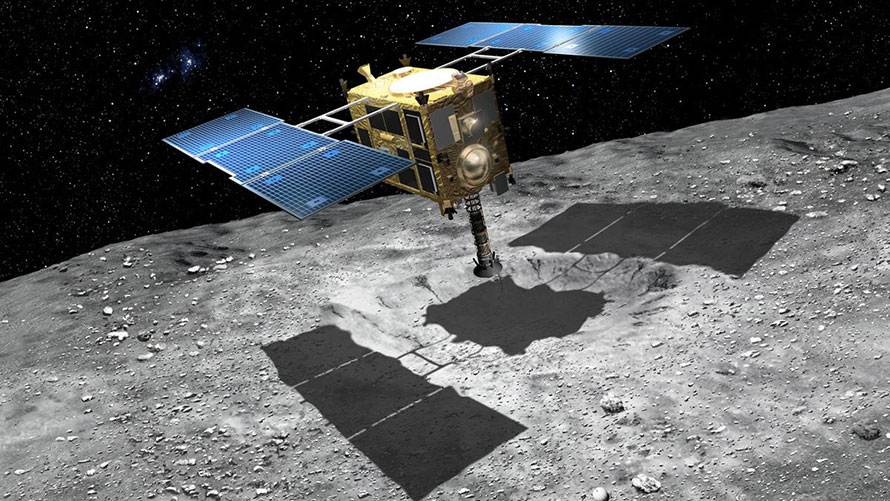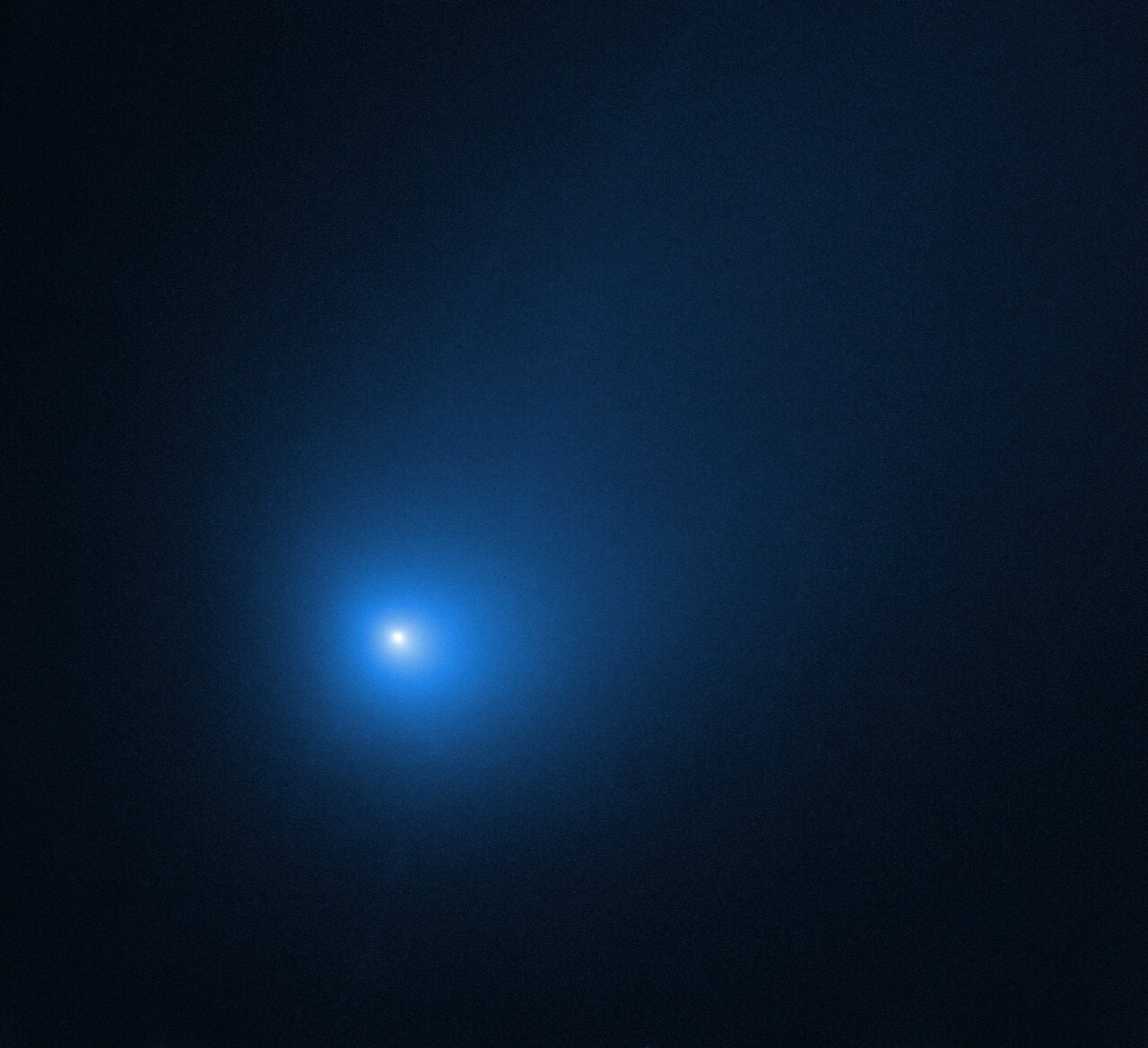The Japanese Aerospace Exploration Agency (JAXA) has performed revolutionary science with itsHayabusaandHayabusa 2missions (Japanese for "peregrine falcon"). These missions conducted sample-return missions from the Near-Earth Asteroids (NEAs) 25143 Itokawa and Ryugu (1998 KY26) in 2005 and 2018, respectively. The research of these samples has provided insight into NEAs and the evolution of the Solar System, as asteroids are essentially leftover material from the formation of the Solar System (ca. 4.6 billion years ago).
A team of international researchers recommends building on this with their concept for a Next Generation Small-Body Sample Return(NGSR) mission. Their proposal was the subject of a paper submitted to the 2025 Lunar Science Planetary Conference(2025 LSPC), which took place from March 10th to 14th in The Woodlands, Texas. This mission is a candidate currently under consideration for a Japanese strategic-class mission to return samples from a comet in the 2030s.
The study was led by Naoya Sakatani, a researcher with JAXA's Institute of Space and Astronautical Science(ISAS). He was joined by fellow researchers from JAXA, the University of Tokyo, Osaka University, the Institute of Science Tokyo, Tohoku University, the Université Paris Cité/Institut de Physique du Globe, the Chiba Institute of Technology, the Oshima National College of Maritime Technology, the Japan Spaceguard Association, Purdue University, Kyusyu University, and the National Astronomical Observatory of Japan(NAOJ).
 This paper builds on previous research led by Shigeru Wakita, a research scientist from MIT, and Purdue (a co-author on this latest study). The research was submitted to the 2023 LSPC and the 2023 Asteroids, Comets, Meteors Conference. The team conducted this concept study for the NGSR Science Working Group at the JAXA Institute of Space Astronautical Science. They note that despite recent breakthroughs in NEA research, the origins of Solar System material and how the first planetesimals formed are still an open question.
This paper builds on previous research led by Shigeru Wakita, a research scientist from MIT, and Purdue (a co-author on this latest study). The research was submitted to the 2023 LSPC and the 2023 Asteroids, Comets, Meteors Conference. The team conducted this concept study for the NGSR Science Working Group at the JAXA Institute of Space Astronautical Science. They note that despite recent breakthroughs in NEA research, the origins of Solar System material and how the first planetesimals formed are still an open question.
To achieve these goals, the NGSR concept will rendezvous and conduct a sample-return with a comet. Like its predecessors, which include the Hayabusa missions and NASA's Origins, Spectral Interpretation, Resource Identification, and Security-Regolith Explorer(OSIRIS-REx) mission, this mission will target subsurface materials. This will provide access to material that has not been affected by cyclic solar heating and irradiation, thereby preserving information about the body's primordial composition and formation history.
This will help refine models of Solar System formation and evolution and answer several unanswered questions about the origin of material in the Solar System. According to current models of Solar System formation, the Sun and its planets formed from nebular material—aka the Nebular Hypothesis. Sample analysis of primordial material left over from this process will shed light on the composition of the Solar Nebula and complement recent findings regarding samples returned from NEAs.
Analysis of samples returned from 25143 Itokawa, Bennu, and Ryugu revealed the presence of organic matter, including amino acids. As such, analysis of comet samples could address whether organic materials related to the emergence of life originated from extraterrestrial sources. As their paper states:
One of the main questions in planetary science is how original materials in the Solar System were generated in our galaxy... In the asteroidal material we have mainly obtained, presolar grains are significantly affected by metamorphism and alteration in the parent body. Research on presolar materials from cometary samples to avoid the effect of these secondary events is highly needed.
 In addition, the Nebular Hypothesis states that once the Sun formed, leftover nebular material fell into a protoplanetary disk that slowly accreted to form the planets. Therefore, a sample return from a comet will also address unanswered questions about the distribution of material within the disk. For example, scientists theorize that comets originating in the outer Solar System delivered water and organic molecules to the inner Solar System billions of years ago.
In addition, the Nebular Hypothesis states that once the Sun formed, leftover nebular material fell into a protoplanetary disk that slowly accreted to form the planets. Therefore, a sample return from a comet will also address unanswered questions about the distribution of material within the disk. For example, scientists theorize that comets originating in the outer Solar System delivered water and organic molecules to the inner Solar System billions of years ago.
The greatest mystery in the process of the accumulation of dust leading to planets is the very first step: the formation of the planetesimals. In the process of micrometer-sized dust accumulating to form kilometer-sized objects (planetesimals), there are some barriers, such as the gas drag force in the solar nebula that makes dust spiral into the Sun... Many theoretical models have been proposed, but there is no conclusive evidence.
Further, asteroids like Ryugu are theorized to have been processed in larger parent bodies, followed by catastrophic destruction and re-accumulation. As a result, any physical information about their parent bodies has been lost in the process. The materials and internal structure of unprocessed bodies (i.e., comets) are necessary to understand the planetesimal formation process empirically. Their proposed mission concept consists of a Deep Space Orbital Transfer Vehicle (DSOTV) and a lander that will sample the comet's interior materials.
They indicate that the nominal target is a Jupiter-family comet and NEA 289P/Blanpain, which passed within 13,588,735 km (8,443,650 mi) of Earth in 2020. After the NGSR rendezvouses with the comet, it will rely on an optical navigation camera to measure its topography and shape. The lander and the DSOTV will explore the object using radar, while gravity measurements will be performed using LIDAR. A thermal infrared camera will analyze its physical properties while the interior structure of a comet will be probed using a bistatic radar and seismometers.
Finally, it will extract samples using a Small Carry-on Impactor(SCI), which was successfully tested with theHayabusa 2mission. Then, it will analyze them using a mass spectrometer to conduct in-situ analysis of the extracted materials. Lastly, the samples will be freeze-dried onboard the lander and transported to the sample return capsule onboard the DSOTV. Assuming a launch window of 2034, the mission will last 14 years in total and will Earth via an ultra-high speed reentry from beyond Mars.
Further Reading:USRA
 Universe Today
Universe Today
